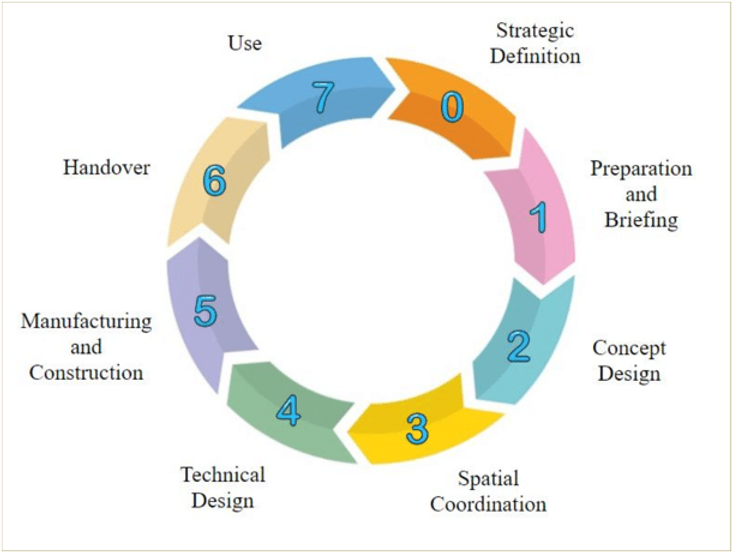The RIBA Plan of Work was introduced in 1963 to provide a framework for architects to use on projects with their clients. Its purpose is to bring greater clarity to the different stages of a construction project. Over the years it has evolved and been updated to reflect the changing trends in project approaches. The RIBA Plan of Work has proved to be an extremely popular and highly regarded framework and has become an industry-wide tool used by all types of construction professionals and companies. The first major overhaul of the Plan of Work was conducted in 2013 and again in 2020
So, what exactly is the RIBA plan of works? Well in many countries there is no formal process for designing a building. However, regardless of where in the world the building is being built, the core tasks required to be undertake are broadly the same. RIBA has broken down these design tasks into 8 distinct ‘design stages’, from 0 to 7. It is important to note that the stages have been designed and intended to be thought of in a circle rather than a straight line.

The 8 stages are as follows:
· 0 – Strategic Definition – this stage focuses on analysing and making the correct strategic decisions in order to capture them in a business case. The advantages and disadvantages, risks and budget must be considered along with Site Surveys, and potential planning appraisals before undertaking comparative analysis to allow the best options to be rated for the clients’ specific requirements.
· 1 – Preparation & Briefing – the core aim of stage 1 is to develop the brief and information that the design team will need to be able to commence the design process at stage 2. To do this, the following tasks are generally undertaken: agreeing a project budget, feasibility studies, sourcing site information, preparing project programme and execution plans.
· 2 – Concept Design – The concept design stage represents the design teams opening response of the project brief that was developed in stage 1. The information that is usually gained at the end of this stage includes, project brief derogations, project strategies, outline specification, signed off stage report and a cost plan.
· 3 – Spatial Coordination – This is a new stage introduced in 2020, replacing ‘developed design’. The tasks it outlines seek to test and validate the architectural concept. This is to ensure that the information prepared at stage 2 is spatially co-ordinated all before moving onto stage 4. The information exchanged includes, updated cost plans, specifications and planning applications produced.
· 4 – Technical Design – At this stage, RIBA lists the activities to be carried out to ensure all design information required to manufacture and construct the actual project is completed. This will include preparing a building regulations application and final specifications.
· 5 – Manufacturing and Construction – As the name suggests, this stage tackles physical construction of the project takes place. Carrying out the construction phase plan, resolving site queries, commissioning of the building, and preparing building manuals are amongst the tasks required through stage 5.
· 6 – Handover – Once construction is complete, the building starts the process of being handed over. Rectifying any defects, obtaining feedback and final certificates, and reviewing the project performance are all covered in RIBA’s breakdown of this stage.
· 7 – Use – This is where the building begins to be used as intended and should be operated and maintained efficiently. RIBA lists several tasks to be undertaken at this stage such as implementing facilities management, verifying project outcomes and updating the building manual and health and safety files. Once the building reaches the end of its useful life, it triggers a new stage 0 and the process starts over.
Each stage is clearly broken down and divided into – stage outcome, core tasks, core statutory processes, procurement routes and, information exchanges – all which attempt to guide you through the entire process and ensure all necessary options have been considered and tasks completed.






